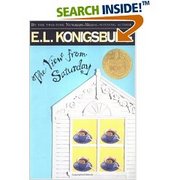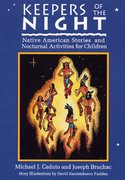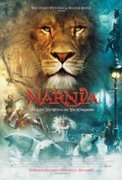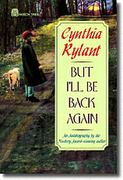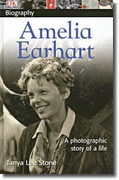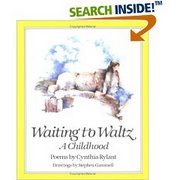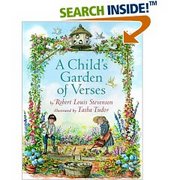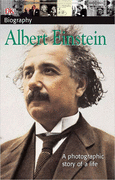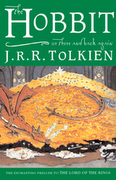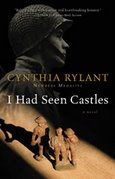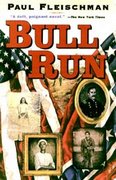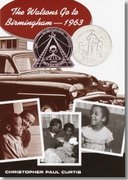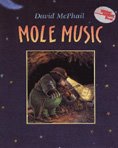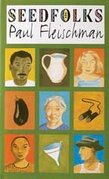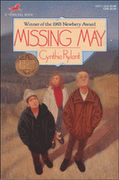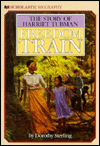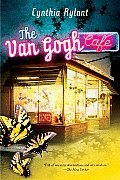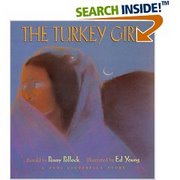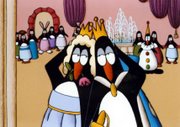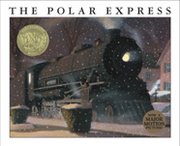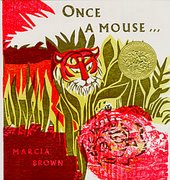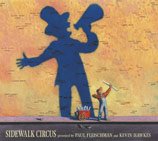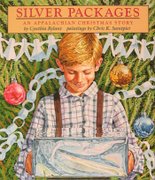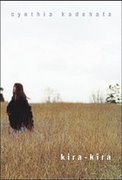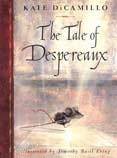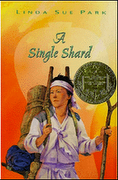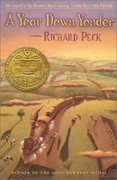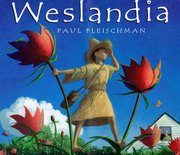by Cynthia Rylant
A very special ‘thank you’ goes to the reference librarian at the Grissom Library in Newport News for saving this book for me, and to my husband who cheerfully got lost with me for hours in Newport News searching for the Grissom Library.
“But I’ll Be Back Again” is Cynthia Rylant’s autobiography. She tells of losing her father to alcoholism and her mother to a career. Ms. Rylant speaks of tears and a sense of loss so great that only someone who has experienced such losses can understand. Fortunately, she lived with her grandparents and an extended family with young cousins who loved her and gave her a childhood her parents could not give.
“Writing stories has given me the power to change things I could not change as a child.” This line is of particular interest to me because I find there are so many things that I too would like to change from my childhood. Ms. Rylant’s grew up in the same time period that I did. Our clothing came from Montgomery Wards; the Beatle were gods, and our indiscretions were modest at best. Boys and girls had innocent crushes, and a stolen kiss was a BIG DEAL!
I smiled when I read about her first menstrual period and not knowing if she should be buried or cremated. My mother ‘forgot’ to mention this little tidbit to me, and I did call her at work to inform her that I was bleeding to death. All in all, Cynthia Rylant put much of the personal, embarrassing stuff that plagues children and teenagers right on the pages for all to read. The passage about having ticks removed by having a burning cigarette coming at you in ‘unmentionable’ places made me laugh out loud!
I appreciated the references about being confused about religion, wanting Christy Sander’s brick house, and visiting an orchestra. She reminds me of one of my younger brothers who when asked what he wanted for Christmas simply answered, “More.”
After reading “Waiting to Waltz”, I expected Cynthia Rylant’s childhood to be a story filled with crushing tragedies. Yes, she lost her father, but she had a loving home with her grandparents. Yes, her mother left to go to school, but she did come back and get Cynthia and clearly loved her. “But I’ll Be Back Again” has many stories of good times, normal childhood experiences, and love.
I agree with Ms. Rylant’s admiration of Bobby Kennedy. He spent his life in search of justice. However, even as a child, I couldn’t stand the music of the Beatles.
Monday, April 23, 2007
Long Night Moon
written by Cynthia Rylant and illustrated by Mark Siegel
“Long Night Moon” is a poetic telling of the Native American tradition of naming important things in nature and explaining the value of the item in nature. In this instance, each month of the year has a full moon. The full moon has been named and the significance of the name is woven into the poetry.
January - “Stormy Moon” - helps find your way home…
February - “Snow Moon” - misses its sister, the Sun
March - “Sap Moon” - promise and hope
April - “Sprouting Grass Moon” - for baby birds
May - “Flower Moon” - smiling, a song
June - “Strawberry Moon” - moonlight meal
July - “Thunder Moon” - clouds beat their drums…
August - “Harvest Moon” - blessing calm fields
September - “Coon Moon” - loves small night creatures
October - “Acorn Moon” - biggest moon says good-bye
November - “Frosty Moon” - might just sleep
December - “Long Night Moon” - waits for morning, faithful friend
I would not really call this a book of poetry. Instead, it reminds me more of lyrics to a song intended to be chanted during a nighttime pow-wow in a longhouse under a starry sky danced to by true Native Americans. I am reminded of tales of how the constellations came to be in the sky and other explanations of nature by indigenous people.
The words are written in cursive, not block print, which implies “Long Night Moon” is not for younger children to read without an older child or an adult.
The illustrations are magical. The artwork was originally done in charcoal then digitally enhanced on Arches paper. Arches paper is a specialty brand of watercolor paper with an exceptionally rough surface. The surface allows layering of color to increase depth. The colors are so intense and deep that I was reminded of Maxfield Parrish’s work with blues and purples. Bunnies, deer, other small animals, and even a woman carrying a baby are drawn in caricature, Disney-like but always shadowy and slightly out of focus. This softens the full-bleed drawings leaving the focus “dreamy and luminous”. The moon is drawn as clear but distant, hazy, impacted with craters, and extremely large reminiscent of Milo’s moon in the movie “Moonstruck.”
I looked up “Long Night Moon” on several web sites. Most of the web sites state that Cynthia Rylant named the moons not Native Americans. Several critics were rather severe in their criticism to Rylant’s reference to Native American traditions. However, I believe that trying to follow in the spirit of Native American’s deep respect for nature was Cynthia Rylant’s intent. And who knows, maybe some tribe somewhere actually did name the moons of each month, and that tale was lost.
See this web site for an example:
http://americanindiansinchildrensliterature.blogspot.com/2006_10_17_archive.html
“Long Night Moon” is a poetic telling of the Native American tradition of naming important things in nature and explaining the value of the item in nature. In this instance, each month of the year has a full moon. The full moon has been named and the significance of the name is woven into the poetry.
January - “Stormy Moon” - helps find your way home…
February - “Snow Moon” - misses its sister, the Sun
March - “Sap Moon” - promise and hope
April - “Sprouting Grass Moon” - for baby birds
May - “Flower Moon” - smiling, a song
June - “Strawberry Moon” - moonlight meal
July - “Thunder Moon” - clouds beat their drums…
August - “Harvest Moon” - blessing calm fields
September - “Coon Moon” - loves small night creatures
October - “Acorn Moon” - biggest moon says good-bye
November - “Frosty Moon” - might just sleep
December - “Long Night Moon” - waits for morning, faithful friend
I would not really call this a book of poetry. Instead, it reminds me more of lyrics to a song intended to be chanted during a nighttime pow-wow in a longhouse under a starry sky danced to by true Native Americans. I am reminded of tales of how the constellations came to be in the sky and other explanations of nature by indigenous people.
The words are written in cursive, not block print, which implies “Long Night Moon” is not for younger children to read without an older child or an adult.
The illustrations are magical. The artwork was originally done in charcoal then digitally enhanced on Arches paper. Arches paper is a specialty brand of watercolor paper with an exceptionally rough surface. The surface allows layering of color to increase depth. The colors are so intense and deep that I was reminded of Maxfield Parrish’s work with blues and purples. Bunnies, deer, other small animals, and even a woman carrying a baby are drawn in caricature, Disney-like but always shadowy and slightly out of focus. This softens the full-bleed drawings leaving the focus “dreamy and luminous”. The moon is drawn as clear but distant, hazy, impacted with craters, and extremely large reminiscent of Milo’s moon in the movie “Moonstruck.”
I looked up “Long Night Moon” on several web sites. Most of the web sites state that Cynthia Rylant named the moons not Native Americans. Several critics were rather severe in their criticism to Rylant’s reference to Native American traditions. However, I believe that trying to follow in the spirit of Native American’s deep respect for nature was Cynthia Rylant’s intent. And who knows, maybe some tribe somewhere actually did name the moons of each month, and that tale was lost.
See this web site for an example:
http://americanindiansinchildrensliterature.blogspot.com/2006_10_17_archive.html
Amelia Earhart
by Tanya Lee Stone
Amelia Earhart was an author, a record-breaking, thrill-seeking pilot, a committed social worker, feminist, wife, and a trailblazer. She epitomizes the phrase, “What a woman!”
The biography “Amelia Earhart” includes small photographs on most pages with short captions for many of the photographs. Timelines and historical sidebars are in each chapter as well. These really help to follow Ms. Earhart’s story more clearly. If you read this biography, you will find that Ms. Earhart was working as a social worker, learning to fly, and getting married all at the same time. Amelia Earhart was the type of person to be involved in quite a few activities simultaneously so the pictures, timelines, and sidebars help keep the chronologically of her story straight.
Even though I have always admired the courage of Amelia Earhart’s flying adventures, I was surprised to find that she was also the author of two books. When in the world did she have time? “20 Hours and 40 Minutes” is the name of her first book, which chronicles her flight aboard the ‘Friendship’. The ‘Friendship’ is the name of the plane in which Amelia Earhart made her first flight over the Atlantic Ocean. She was the first woman to fly over the Atlantic Ocean, but she was a passenger not the pilot. Her second book, written in 1932, was titled “The Fun of It: Random Records of my Own Flying and Women in Aviation”. This book is a collection of short stories about her and other women pilots.
Amelia Earhart was not wealthy, and she actually hard to work for a living unlike many of the other pilots. Earhart earned some money from flying in air shows doing dangerous stunts with other women pilots. She earned small amounts of money from the sale of her books and wrote articles for “Cosmopolitan” magazine. The bulk of her income came from working at Denison House, a settlement house for impoverished, immigrant families, in Boston as a social worker.
Flying has always been an expensive hobby. Amelia Earhart could not afford to purchase airplanes, flight training time, staff, and other expenses on her own. Several wealthy patrons and business people paid her expenses and bought planes for Ms. Earhart to fly, and she in turn gave public appearances for them and hawked their products. One of the photos shows the words ‘Beech-Nut’ written across the entire length of her plane.
Eventually she married G.P. Putnam. Putnan was wealthy and financed Earhart’s later record-breaking flights including the last flight. Amelia Earhart disappeared somewhere over the Pacific Ocean about twenty hours into the flight off Lae. Lae is a small town on an island east of Australia. Looking at a map, shows that Earhart could have been very close to Hawaii at the time her plane disappeared; however, the truth of what happened isn’t known.
I read this biography in one sitting because the story is engrossing. I have always admired Amelia Earhart and dreamed of being like her when I grew up. What a woman!
Lesson Plans are found at:
http://teacherlink.ed.usu.edu/tlresources/units/Byrnes-famous/Earhart.html
Amelia Earhart was an author, a record-breaking, thrill-seeking pilot, a committed social worker, feminist, wife, and a trailblazer. She epitomizes the phrase, “What a woman!”
The biography “Amelia Earhart” includes small photographs on most pages with short captions for many of the photographs. Timelines and historical sidebars are in each chapter as well. These really help to follow Ms. Earhart’s story more clearly. If you read this biography, you will find that Ms. Earhart was working as a social worker, learning to fly, and getting married all at the same time. Amelia Earhart was the type of person to be involved in quite a few activities simultaneously so the pictures, timelines, and sidebars help keep the chronologically of her story straight.
Even though I have always admired the courage of Amelia Earhart’s flying adventures, I was surprised to find that she was also the author of two books. When in the world did she have time? “20 Hours and 40 Minutes” is the name of her first book, which chronicles her flight aboard the ‘Friendship’. The ‘Friendship’ is the name of the plane in which Amelia Earhart made her first flight over the Atlantic Ocean. She was the first woman to fly over the Atlantic Ocean, but she was a passenger not the pilot. Her second book, written in 1932, was titled “The Fun of It: Random Records of my Own Flying and Women in Aviation”. This book is a collection of short stories about her and other women pilots.
Amelia Earhart was not wealthy, and she actually hard to work for a living unlike many of the other pilots. Earhart earned some money from flying in air shows doing dangerous stunts with other women pilots. She earned small amounts of money from the sale of her books and wrote articles for “Cosmopolitan” magazine. The bulk of her income came from working at Denison House, a settlement house for impoverished, immigrant families, in Boston as a social worker.
Flying has always been an expensive hobby. Amelia Earhart could not afford to purchase airplanes, flight training time, staff, and other expenses on her own. Several wealthy patrons and business people paid her expenses and bought planes for Ms. Earhart to fly, and she in turn gave public appearances for them and hawked their products. One of the photos shows the words ‘Beech-Nut’ written across the entire length of her plane.
Eventually she married G.P. Putnam. Putnan was wealthy and financed Earhart’s later record-breaking flights including the last flight. Amelia Earhart disappeared somewhere over the Pacific Ocean about twenty hours into the flight off Lae. Lae is a small town on an island east of Australia. Looking at a map, shows that Earhart could have been very close to Hawaii at the time her plane disappeared; however, the truth of what happened isn’t known.
I read this biography in one sitting because the story is engrossing. I have always admired Amelia Earhart and dreamed of being like her when I grew up. What a woman!
Lesson Plans are found at:
http://teacherlink.ed.usu.edu/tlresources/units/Byrnes-famous/Earhart.html
Sunday, April 15, 2007
Waiting to Waltz: A Childhood
by Cynthia Rylant
“Waiting to Waltz: A Childhood” is a collection of poems written by Cynthia Rylant to capture the flavor of her hometown, Beaver, and her childhood. The overall tone of the collection is bleak with a litany of negative images.
Clearly, Beaver is a small town as witnessed in the line from the first poem, “Beaver” that reads, “Little strip of street called Beaver.” The poems paint haunting images of a storekeeper, Mrs. Todd, “she white-faced and silent.” A drunk who sits by the river day after day is referred to as a brain surgeon (scary thought!). The author’s house has no name and no number; her mom accidentally kills a dog in “Little Short Legs”. The author is taken to a Pentecostal church and terrified by the noise; I experienced exactly the same thing in my childhood at a Pentecostal church. The author lost a spelling bee, almost drowned in a swimming pool, offered bananas by a creepy old man, walked a frightened child home in a storm only to be abandoned in the storm herself, buried a dead cat, had mad dogs, and no father.
A neighbor, Mr. Dill, left, and no one noticed for three years. The author was left alone during the summer, and no one to make lunch for her. During the school year, playground bullies monopolized the schoolyard, and being boys left the girls no place to go. Her friend’s collie, Major, was killed by a car. Her father left when she was four and died when she was thirteen. The author prayed to be rich and Catholic to fit in with the popular kids, called her boyfriend a “pet rock”, and was “yelled to the cross” by a preacher while her mother wondered how she could be duped.
There were a few exceptions to these negative images. The author had a friend in Randy, and they both enjoyed talking to Sam, the shoe shop man. Her mother was a nurse and respected by the other children when an emergency arose, and the author did get to be a majorette in band.
I found this collection of poems to be beautifully written albeit sad and depressing in tone. Goodness! I would have run as far and as fast as I could to get out of Beaver as soon as I could had I been the author.
Lesson Plans at:
http://www.ferrum.edu/applit/lessons/waltzlp.htm
“Waiting to Waltz: A Childhood” is a collection of poems written by Cynthia Rylant to capture the flavor of her hometown, Beaver, and her childhood. The overall tone of the collection is bleak with a litany of negative images.
Clearly, Beaver is a small town as witnessed in the line from the first poem, “Beaver” that reads, “Little strip of street called Beaver.” The poems paint haunting images of a storekeeper, Mrs. Todd, “she white-faced and silent.” A drunk who sits by the river day after day is referred to as a brain surgeon (scary thought!). The author’s house has no name and no number; her mom accidentally kills a dog in “Little Short Legs”. The author is taken to a Pentecostal church and terrified by the noise; I experienced exactly the same thing in my childhood at a Pentecostal church. The author lost a spelling bee, almost drowned in a swimming pool, offered bananas by a creepy old man, walked a frightened child home in a storm only to be abandoned in the storm herself, buried a dead cat, had mad dogs, and no father.
A neighbor, Mr. Dill, left, and no one noticed for three years. The author was left alone during the summer, and no one to make lunch for her. During the school year, playground bullies monopolized the schoolyard, and being boys left the girls no place to go. Her friend’s collie, Major, was killed by a car. Her father left when she was four and died when she was thirteen. The author prayed to be rich and Catholic to fit in with the popular kids, called her boyfriend a “pet rock”, and was “yelled to the cross” by a preacher while her mother wondered how she could be duped.
There were a few exceptions to these negative images. The author had a friend in Randy, and they both enjoyed talking to Sam, the shoe shop man. Her mother was a nurse and respected by the other children when an emergency arose, and the author did get to be a majorette in band.
I found this collection of poems to be beautifully written albeit sad and depressing in tone. Goodness! I would have run as far and as fast as I could to get out of Beaver as soon as I could had I been the author.
Lesson Plans at:
http://www.ferrum.edu/applit/lessons/waltzlp.htm
Joyful Noise: Poems for Two Voices
by Paul Fleischman
“Joyful Noise: Poems for Two Voices” will be a wonderful addition to my library. As I read the poems to myself, I could envision students reading the poems together and laughing at the words, visualizing the insects, and trying to stay in unison on the refrain.
No wonder Paula Fleischman won the Newbery Award for this collection of poems; they are perfectly in tune with children with upbeat messages.
“Joyful Noise:” begins with the dedication page as the author dedicates the poems to Seth, his porch light. Once you read the poem “The Moth’s Serenade”, the dedication makes sense and also makes the reader smile.
The poetry in this collection is intended to be read as a duet from top to bottom until the lines meet horizontally. Then the lines are to be read in unison.” Joyful Noise:” would be an excellent beginning reader’s theater for students. The poems have short lines, easy yet expansive vocabulary, touches of humor, age appropriate subject matter, and are not too lengthy.
The poems could also be used for word study or vocabulary enrichment. For example, in “Mayflies” and “Fireflies”, verbs are emphasized and used in different tenses. Students could identify the verbs and find the root words and ending markers leading to additional discussion and activities.
“Mayflies” “Fireflies”
fevered frenzied glimmering
rushed gleaming
swarming, swerving glowing
rising high flickering
then falling flashing
courting on the wing flitting
Rhyme scheme could be studied with “Book Lice” due to the use of abcb rhyme in the stanzas and abb rhyme in the refrain.
8 Later I lodged in a
9 Scott’s works - volume 50 b
10 While I passed my youth c
11 in an Agatha Christie b
12 We’re book lice a
13 attached b
14 despite contrasting pasts. B
I think my favorite poem in the collection is “Honeybees” which shows diametrically opposing points of view. The worker bee complains of his hard life while the queen bee congratulates herself upon her easy life. In the classroom, this poem could easily be used to compare and contrast the lives of the two bees, which could be a natural lead in to the study of bees or animal life.
Lesson Plans can be found at:
http://www.readwritethink.org/lessons/lesson_view.asp?id=69
“Joyful Noise: Poems for Two Voices” will be a wonderful addition to my library. As I read the poems to myself, I could envision students reading the poems together and laughing at the words, visualizing the insects, and trying to stay in unison on the refrain.
No wonder Paula Fleischman won the Newbery Award for this collection of poems; they are perfectly in tune with children with upbeat messages.
“Joyful Noise:” begins with the dedication page as the author dedicates the poems to Seth, his porch light. Once you read the poem “The Moth’s Serenade”, the dedication makes sense and also makes the reader smile.
The poetry in this collection is intended to be read as a duet from top to bottom until the lines meet horizontally. Then the lines are to be read in unison.” Joyful Noise:” would be an excellent beginning reader’s theater for students. The poems have short lines, easy yet expansive vocabulary, touches of humor, age appropriate subject matter, and are not too lengthy.
The poems could also be used for word study or vocabulary enrichment. For example, in “Mayflies” and “Fireflies”, verbs are emphasized and used in different tenses. Students could identify the verbs and find the root words and ending markers leading to additional discussion and activities.
“Mayflies” “Fireflies”
fevered frenzied glimmering
rushed gleaming
swarming, swerving glowing
rising high flickering
then falling flashing
courting on the wing flitting
Rhyme scheme could be studied with “Book Lice” due to the use of abcb rhyme in the stanzas and abb rhyme in the refrain.
8 Later I lodged in a
9 Scott’s works - volume 50 b
10 While I passed my youth c
11 in an Agatha Christie b
12 We’re book lice a
13 attached b
14 despite contrasting pasts. B
I think my favorite poem in the collection is “Honeybees” which shows diametrically opposing points of view. The worker bee complains of his hard life while the queen bee congratulates herself upon her easy life. In the classroom, this poem could easily be used to compare and contrast the lives of the two bees, which could be a natural lead in to the study of bees or animal life.
Lesson Plans can be found at:
http://www.readwritethink.org/lessons/lesson_view.asp?id=69
A Child’s Garden of Verses
by Robert Louis Stevenson
There are four collections or Chapters contained within the book A Garden of Verses:
For Alison Cunningham
The Child Alone
Garden days
Envoys
They are generally of increasing complexity, length, and sentiment.
The first is dedicated to Alison Cunningham, his nurse from childhood, to whom he attributes a great deal of credit for his literary success. All the verses are very simple with simple themes. This is the largest of the 4 collections and is clearly to be used as Alison Cunningham used it; reading to children.
In many ways this collection of poems for children is more revealing about Stevenson than many of his more serious works.
From: Foreign Lands
I saw the next door garden lie,
Adorned with flowers, before my eye,
And many pleasant places more
That I had never seen before.
The meter is consistent from line to line for simplicity, and the lines are also short.
Thematically, it also shows the isolation of the childhood Stevenson had, and mistakenly presumes upon others. How many children have so little freedom they have never seen the garden next door.
Auntie’s Skirts
Whenever Auntie moves around,
Her dresses make a curious sound,
They trail behind her up the floor,
And trundle after through the door.
Again, the meter remains consistent; the lines remain short. Also again, whether unwittingly or not, Stevenson conveys the sense of isolation by maximizing the silence of a house in which a child pays close attention to the soft swishing sounds made by his auntie’s dress as she moves.
From one of the more famous poems of the collection:
The Land of Nod
4th stanza
Try as I like to find the way,
I never can get back by day,
Nor can remember plain and clear
The curious music that I hear.
Altogether the first collection is useful for it’s simple form and lessons until you reach the last poem “The Keepsake Mill”. The first collection is however mildly solemn, and whether intended or not, reflects the childhood of RLS which was filled with illness and very poor health. The fact that the entire first collection is dedicated to the woman who tirelessly spent so many hours with the invalid and infirm child sets the tone for most of the book.
The second Collection: The Child Alone
is still simple in theme but more complex in form.
Armies in the Fire
The lamps now glitter down the street;
Faintly sound the falling feet;
And the blue even slowly falls
About the garden trees and walls.
Now in the falling of the gloom
The red fire paints the empty room:
And warmly on the roof it looks,
And flickers on the back of books.
Armies march by tower and spire
Of cities blazing, in the fire;--
Till as I gaze with staring eyes,
The armies fall, the lustre dies.
Then once again the glow returns;
Again the phantom city burns;
And down the red-hot valley, lo!
The phantom armies marching go!
Blinking embers, tell me true
Where are those armies marching to,
And what the burning city is
That crumbles in your furnaces!
In the earlier selections of the Chapter, form remains simple but word choice and theme become slightly complex. Ignoring the spelling changes from American to British English, (Luster to Lustre) the word choice of; gaze, crumbles, embers, phantom, etc certainly add to the sense of darkness in the room as the child envisions images in the fire. Oddly, when his meter becomes more complex, he becomes more joyful.
My ship and IO it's I that am the captain of a tiny little ship, Of a ship that goes a sailing on the pond;And my ship it keeps a-turning all around and all about;But when I'm a little older, I shall find the secret out How to send my vessel sailing on beyond. For I mean to grow a little as the dolly at the helm, And the dolly I intend to come alive;And with him beside to help me, it's a-sailing I shall go,It's a-sailing on the water, when the jolly breezes blow And the vessel goes a dive-dive-dive. O it's then you'll see me sailing through the rushes and the reeds, And you'll hear the water singing at the prow;For beside the dolly sailor, I'm to voyage and explore,To land upon the island where no dolly was before, And to fire the penny cannon in the bow.
The third is more complex again in both form and theme, and again for older children.
Envoys, with one exception, is a group of dedications and poems intended for specific individuals he knew.
All of the poems are clearly from a simpler time, as he remembers it. Useful for the teacher in a classroom is the sense of isolation for the privileged few that Stevenson portrays through his poems.
A glaring exception to all of this is the last poem in the first Chapter: Keepsake MillOver the borders, a sin without pardon, Breaking the branches and crawling below,Out through the breach in the wall of the garden, Down by the banks of the river we go. Here is a mill with the humming of thunder, Here is the weir with the wonder of foam,Here is the sluice with the race running under-- Marvellous places, though handy to home! Sounds of the village grow stiller and stiller, Stiller the note of the birds on the hill;Dusty and dim are the eyes of the miller, Deaf are his ears with the moil of the mill. Years may go by, and the wheel in the river Wheel as it wheels for us, children, to-day,Wheel and keep roaring and foaming for ever Long after all of the boys are away. Home for the Indies and home from the ocean, Heroes and soldiers we all will come home;Still we shall find the old mill wheel in motion, Turning and churning that river to foam. You with the bean that I gave when we quarrelled, I with your marble of Saturday last,Honoured and old and all gaily apparelled, Here we shall meet and remember the past.
This poem is not for the children at all. It was clearly written as a gift to the adult that reads to the children, a gift of remembrance and reminiscence.
In many ways, reviewing the work of one of the renowned poets and finding any negative is disconcerting. But the skills and talents that make his work so appealing for adults, when transferred to a child’s medium, appears strange. His best work in the child’s collection are the poems intended for the reader, not the listener. As such I cannot recommend the collection as a whole, but only selected poems as they may apply.
There are four collections or Chapters contained within the book A Garden of Verses:
For Alison Cunningham
The Child Alone
Garden days
Envoys
They are generally of increasing complexity, length, and sentiment.
The first is dedicated to Alison Cunningham, his nurse from childhood, to whom he attributes a great deal of credit for his literary success. All the verses are very simple with simple themes. This is the largest of the 4 collections and is clearly to be used as Alison Cunningham used it; reading to children.
In many ways this collection of poems for children is more revealing about Stevenson than many of his more serious works.
From: Foreign Lands
I saw the next door garden lie,
Adorned with flowers, before my eye,
And many pleasant places more
That I had never seen before.
The meter is consistent from line to line for simplicity, and the lines are also short.
Thematically, it also shows the isolation of the childhood Stevenson had, and mistakenly presumes upon others. How many children have so little freedom they have never seen the garden next door.
Auntie’s Skirts
Whenever Auntie moves around,
Her dresses make a curious sound,
They trail behind her up the floor,
And trundle after through the door.
Again, the meter remains consistent; the lines remain short. Also again, whether unwittingly or not, Stevenson conveys the sense of isolation by maximizing the silence of a house in which a child pays close attention to the soft swishing sounds made by his auntie’s dress as she moves.
From one of the more famous poems of the collection:
The Land of Nod
4th stanza
Try as I like to find the way,
I never can get back by day,
Nor can remember plain and clear
The curious music that I hear.
Altogether the first collection is useful for it’s simple form and lessons until you reach the last poem “The Keepsake Mill”. The first collection is however mildly solemn, and whether intended or not, reflects the childhood of RLS which was filled with illness and very poor health. The fact that the entire first collection is dedicated to the woman who tirelessly spent so many hours with the invalid and infirm child sets the tone for most of the book.
The second Collection: The Child Alone
is still simple in theme but more complex in form.
Armies in the Fire
The lamps now glitter down the street;
Faintly sound the falling feet;
And the blue even slowly falls
About the garden trees and walls.
Now in the falling of the gloom
The red fire paints the empty room:
And warmly on the roof it looks,
And flickers on the back of books.
Armies march by tower and spire
Of cities blazing, in the fire;--
Till as I gaze with staring eyes,
The armies fall, the lustre dies.
Then once again the glow returns;
Again the phantom city burns;
And down the red-hot valley, lo!
The phantom armies marching go!
Blinking embers, tell me true
Where are those armies marching to,
And what the burning city is
That crumbles in your furnaces!
In the earlier selections of the Chapter, form remains simple but word choice and theme become slightly complex. Ignoring the spelling changes from American to British English, (Luster to Lustre) the word choice of; gaze, crumbles, embers, phantom, etc certainly add to the sense of darkness in the room as the child envisions images in the fire. Oddly, when his meter becomes more complex, he becomes more joyful.
My ship and IO it's I that am the captain of a tiny little ship, Of a ship that goes a sailing on the pond;And my ship it keeps a-turning all around and all about;But when I'm a little older, I shall find the secret out How to send my vessel sailing on beyond. For I mean to grow a little as the dolly at the helm, And the dolly I intend to come alive;And with him beside to help me, it's a-sailing I shall go,It's a-sailing on the water, when the jolly breezes blow And the vessel goes a dive-dive-dive. O it's then you'll see me sailing through the rushes and the reeds, And you'll hear the water singing at the prow;For beside the dolly sailor, I'm to voyage and explore,To land upon the island where no dolly was before, And to fire the penny cannon in the bow.
The third is more complex again in both form and theme, and again for older children.
Envoys, with one exception, is a group of dedications and poems intended for specific individuals he knew.
All of the poems are clearly from a simpler time, as he remembers it. Useful for the teacher in a classroom is the sense of isolation for the privileged few that Stevenson portrays through his poems.
A glaring exception to all of this is the last poem in the first Chapter: Keepsake MillOver the borders, a sin without pardon, Breaking the branches and crawling below,Out through the breach in the wall of the garden, Down by the banks of the river we go. Here is a mill with the humming of thunder, Here is the weir with the wonder of foam,Here is the sluice with the race running under-- Marvellous places, though handy to home! Sounds of the village grow stiller and stiller, Stiller the note of the birds on the hill;Dusty and dim are the eyes of the miller, Deaf are his ears with the moil of the mill. Years may go by, and the wheel in the river Wheel as it wheels for us, children, to-day,Wheel and keep roaring and foaming for ever Long after all of the boys are away. Home for the Indies and home from the ocean, Heroes and soldiers we all will come home;Still we shall find the old mill wheel in motion, Turning and churning that river to foam. You with the bean that I gave when we quarrelled, I with your marble of Saturday last,Honoured and old and all gaily apparelled, Here we shall meet and remember the past.
This poem is not for the children at all. It was clearly written as a gift to the adult that reads to the children, a gift of remembrance and reminiscence.
In many ways, reviewing the work of one of the renowned poets and finding any negative is disconcerting. But the skills and talents that make his work so appealing for adults, when transferred to a child’s medium, appears strange. His best work in the child’s collection are the poems intended for the reader, not the listener. As such I cannot recommend the collection as a whole, but only selected poems as they may apply.
Albert Einstein: A Photographic Story of a Life
by Frieda Wishinsky
A quiet and shy man who shook the world. In 2000 TIME magazine chose Albert Einstein as the Person of the Century (20th). The article makes a good case that his work on atomics, photo electronics, and even politics has contributed more to the information age than it did to the atomic age. His work on atomic fission is well known, but some of his most renowned work enabled laser and biochemical advances that have impacted electronics, medicine, engineering, and even the Middle East conflict.
His vocal opposition to the Nazi party in Germany resulted in his being condemned in absentia, but he continued his opposition from Princeton University where he taught. He traveled and spoke widely to audiences raising funds and consciousness for the creation of a place for Jews in Palestine. His work there was so impactful that he was offered the Presidency of the State of Israel. He refused on grounds of poor health.
The biography focuses on his humanism, his opposition to militarism, and his seeming conflicts. He helped to engender the image of the iconic scientist who can read the secrets of the cosmos but can’t comb his hair or put on matching socks. A feat he accomplished regularly. The attempts to control or contain him were many. The Chancellor of Princeton University actually set up all of Einstein’s correspondence to go through the Chancellery. All incoming and outgoing calls for Einstein were screened there. This was frustrating for the elder scientist, but he bore it until President Roosevelt called to invite Einstein to the White House, and the Chancellor refused because he didn’t like the democratic president. Einstein rushed to the office, and from that moment the Chancellery no longer screened any calls or mail.
His accomplishments as a scientist came without a laboratory. When asked what facilities he would need at Princeton he replied, “A desk, a chair, and a pen....Oh! and a large trash can to throw away my ideas.” He didn’t need equipment to determine how the universe worked. He just figured it out.
A quiet and shy man who shook the world. In 2000 TIME magazine chose Albert Einstein as the Person of the Century (20th). The article makes a good case that his work on atomics, photo electronics, and even politics has contributed more to the information age than it did to the atomic age. His work on atomic fission is well known, but some of his most renowned work enabled laser and biochemical advances that have impacted electronics, medicine, engineering, and even the Middle East conflict.
His vocal opposition to the Nazi party in Germany resulted in his being condemned in absentia, but he continued his opposition from Princeton University where he taught. He traveled and spoke widely to audiences raising funds and consciousness for the creation of a place for Jews in Palestine. His work there was so impactful that he was offered the Presidency of the State of Israel. He refused on grounds of poor health.
The biography focuses on his humanism, his opposition to militarism, and his seeming conflicts. He helped to engender the image of the iconic scientist who can read the secrets of the cosmos but can’t comb his hair or put on matching socks. A feat he accomplished regularly. The attempts to control or contain him were many. The Chancellor of Princeton University actually set up all of Einstein’s correspondence to go through the Chancellery. All incoming and outgoing calls for Einstein were screened there. This was frustrating for the elder scientist, but he bore it until President Roosevelt called to invite Einstein to the White House, and the Chancellor refused because he didn’t like the democratic president. Einstein rushed to the office, and from that moment the Chancellery no longer screened any calls or mail.
His accomplishments as a scientist came without a laboratory. When asked what facilities he would need at Princeton he replied, “A desk, a chair, and a pen....Oh! and a large trash can to throw away my ideas.” He didn’t need equipment to determine how the universe worked. He just figured it out.
The Hobbit
by JRR Tolkien
Few books have had as wide-ranging impact on society as have the works of JRR Tolkien. Before the publication of the “Lord of the Rings” and it’s prequel “The Hobbit”, dragons, elves and orcs were not popular in fiction. His works are now mimicked so widely that it has created it’s own genre. Lord of the Rings (LOTR) the movies, Dungeons & Dragons, The Dragons of Pern, The Sword of Shanarra series, etc. Just walk through the isle of the Fantasy section at your favorite bookstore and see what JRR began. And his work transcends just movies and books. Have you ever seen the t-shirt “FRODO LIVES!”? And, video game makers have taken merciless advantage of this advertising freebee. The number of “Sword and Sorcery” games is beyond count. Perhaps the best description of the impact this series of books has had came from an unlikely source. While walking into a theater to see a movie, years ago, a group of young people exited, and I overheard them. They had paid full ticket prices to go in and see just the preview of the movie Lord of the Rings: Fellowship of the Ring. They didn’t bother to watch the feature movie, and they thought their money was well spent. The beginning of that phenomenon was “The Hobbit”.
More then the rest of the series, the writing style, word choice, and length of “The Hobbit” make it acceptable juvenile fiction. At half the length of the other three books, it is easier for a young reader and is much less dire. While still meeting the requirements of great adventure, many of its characters are younger....and shorter!
Thematically, “The Hobbit” is about the path to maturity. As Bilbo travels with the dwarves through adventures against trolls, goblins, and spiders, he changes from a passive lover of good food and domestic comfort to a brave, realistic, active tactician. Each time he descends into the underworld, his foes become less like reality. Golum’s cave, the King of the Wood Elves, and the cave of Smaug’s hoard represent creatures of increasing fantasy or spiritual natures. Bilbo’s adventures take him from personal survival to responsibility for all those impacted by his actions. As such Bilbo passes through his adventures becoming a more ethical and responsible person.
Much of LOTR is written in Germanic structure. The sentences are much more convoluted than “The Hobbit”. With shorter sentences and simpler word choices, the story becomes a much better fit for younger readers.
Few books have had as wide-ranging impact on society as have the works of JRR Tolkien. Before the publication of the “Lord of the Rings” and it’s prequel “The Hobbit”, dragons, elves and orcs were not popular in fiction. His works are now mimicked so widely that it has created it’s own genre. Lord of the Rings (LOTR) the movies, Dungeons & Dragons, The Dragons of Pern, The Sword of Shanarra series, etc. Just walk through the isle of the Fantasy section at your favorite bookstore and see what JRR began. And his work transcends just movies and books. Have you ever seen the t-shirt “FRODO LIVES!”? And, video game makers have taken merciless advantage of this advertising freebee. The number of “Sword and Sorcery” games is beyond count. Perhaps the best description of the impact this series of books has had came from an unlikely source. While walking into a theater to see a movie, years ago, a group of young people exited, and I overheard them. They had paid full ticket prices to go in and see just the preview of the movie Lord of the Rings: Fellowship of the Ring. They didn’t bother to watch the feature movie, and they thought their money was well spent. The beginning of that phenomenon was “The Hobbit”.
More then the rest of the series, the writing style, word choice, and length of “The Hobbit” make it acceptable juvenile fiction. At half the length of the other three books, it is easier for a young reader and is much less dire. While still meeting the requirements of great adventure, many of its characters are younger....and shorter!
Thematically, “The Hobbit” is about the path to maturity. As Bilbo travels with the dwarves through adventures against trolls, goblins, and spiders, he changes from a passive lover of good food and domestic comfort to a brave, realistic, active tactician. Each time he descends into the underworld, his foes become less like reality. Golum’s cave, the King of the Wood Elves, and the cave of Smaug’s hoard represent creatures of increasing fantasy or spiritual natures. Bilbo’s adventures take him from personal survival to responsibility for all those impacted by his actions. As such Bilbo passes through his adventures becoming a more ethical and responsible person.
Much of LOTR is written in Germanic structure. The sentences are much more convoluted than “The Hobbit”. With shorter sentences and simpler word choices, the story becomes a much better fit for younger readers.
Wednesday, April 11, 2007
I Had Seen Castles
by Cynthia Rylant
“I Had Seen Castles” is the story of a young man, John Dante, who optimistically goes to war with dreams of glory and righteousness and returns with reality and nightmares. His attitude is familiar. I have read a number of books that had characters who felt the same way. Each war begins with the “Rah-rah-rah” attitude reminiscent of cheerleaders at a local high school football game. Everything is black and white. We are good. They are bad. We are right. They are wrong. Etc, etc, etc…
I feel anger when I read books like this. “Bull Run”, “Gone With The Wind”, “Platoon”, and many more stories all start out the same. They touch the patriotic streak we all seem to have and crucify anyone who speaks out against war as unpatriotic. The older I get, the angrier I become at the patriotic rhetoric. The truth always seems many wounded bodies away. Cynthia Rylant’s writing ability made me experience enough anger to keep me awake for hours. She is a true master at her craft.
Fifty years after the war, John Dante wrote his story of a young boy, himself, off to World War II. The boy’s mother took a job in a factory to try to shorten the war. The boy speaks of the ten-hour days she puts in, day after day, coming home exhausted. John acknowledges that she does all this to save him from going to war, but his only concern is his embarrassment at seeing her wear pants. This is the real enemy. Young people, so self-absorbed, cannot see beyond their own wants and needs. His mother sacrifices her life to save his, and he only sees what she wears. John blindly goes off to war a haze of patriotism to return stunned and empty from the terrors he had seen.
The most regrettable thing about “I Had Seen Castles” is that once that John realizes that Ginny, his first love, was right in questioning the value of war, he never tries to find her again. He is so wrapped up in himself that he cannot or will not look for her. How very sad.
Cynthia Rylant does a tremendous job pushing all the right emotional buttons. She is right to reserve this story for older students as younger students would not understand the release of lovemaking and the fighting to save your fellow soldiers concepts.
“I Had Seen Castles” is the story of a young man, John Dante, who optimistically goes to war with dreams of glory and righteousness and returns with reality and nightmares. His attitude is familiar. I have read a number of books that had characters who felt the same way. Each war begins with the “Rah-rah-rah” attitude reminiscent of cheerleaders at a local high school football game. Everything is black and white. We are good. They are bad. We are right. They are wrong. Etc, etc, etc…
I feel anger when I read books like this. “Bull Run”, “Gone With The Wind”, “Platoon”, and many more stories all start out the same. They touch the patriotic streak we all seem to have and crucify anyone who speaks out against war as unpatriotic. The older I get, the angrier I become at the patriotic rhetoric. The truth always seems many wounded bodies away. Cynthia Rylant’s writing ability made me experience enough anger to keep me awake for hours. She is a true master at her craft.
Fifty years after the war, John Dante wrote his story of a young boy, himself, off to World War II. The boy’s mother took a job in a factory to try to shorten the war. The boy speaks of the ten-hour days she puts in, day after day, coming home exhausted. John acknowledges that she does all this to save him from going to war, but his only concern is his embarrassment at seeing her wear pants. This is the real enemy. Young people, so self-absorbed, cannot see beyond their own wants and needs. His mother sacrifices her life to save his, and he only sees what she wears. John blindly goes off to war a haze of patriotism to return stunned and empty from the terrors he had seen.
The most regrettable thing about “I Had Seen Castles” is that once that John realizes that Ginny, his first love, was right in questioning the value of war, he never tries to find her again. He is so wrapped up in himself that he cannot or will not look for her. How very sad.
Cynthia Rylant does a tremendous job pushing all the right emotional buttons. She is right to reserve this story for older students as younger students would not understand the release of lovemaking and the fighting to save your fellow soldiers concepts.
Bull Run
by Paul Fleischman
“Bull Run” reminded me of “Seedfolks,” also written by Paul Fleischman. Each chapter told the story of one person’s thoughts and actions prior to, during, and after the battle of Bull Run. The chapters were surprising short, only a page or two each. Each person’s story did not completely unfold in the chapter. The author told pieces of the story for each character moving the story along chronologically.
Slaves, women, generals, colonels, young boys, a doctor, and a stable lad all had roles to play in “Bull Run”. The characters I identified with the most were the doctor, William Rye, and the stable lad, Shem Suggs. The doctor went with the army knowing that many soldiers would be wounded and in need of medical care. He had no delusions of glory about war as the doctor already had combat experience. The stable lad joined the army so one day he could own a horse. Some folks took picnic lunches and champagne to watch the battle as if it were a play. The disconnect with reality is startling; however, history documents that people really did have picnics as they watched the battle. All the other characters were slaves looking for freedom or delusional characters dreaming of glory and fast victory.
Shem Suggs and Dr. William Rye were the most admirable people in the story. Shem buried the dead horses and cared for the live ones after the battle. The doctor tried to save lives regardless of their affiliation.
Dr. Rye referred to the rejoicing and celebrating of the Southern victory the asked, “A victory? Indeed it was, for Death upon his pale horse.” Later that very day, I watched a news report about the “victory” in Iraq. Saddam Hussein’s statute was being pulled down as people rejoiced in the streets. Four years later and thousands dead in Iraq, we can also ask, “A victory? Indeed it was, for Death upon his pale horse.” How odd to hear a four-year anniversary of the “victory” in Iraq just as I read this passage in “Bull Run,” the first battle of a bloody four-year war from our past.
Paul Fleischman’s word craft in “Bull Run” is impressive. In one simile, a slave’s smile was described as, “…the slimmest of smiles fled his lips, like a snake disappearing down a hole.” This perfectly describes the smiles that some of my “would be” rascally students give me on occasion. The reader could see the facial expressions of some of the characters as the author described them.
I admit that I had to keep going back in the book to remember who the characters were. A graphic organizer would help clarify and separate the characters if a teacher chose to have students read “Bull Run” in the classroom. “Bull Run” would be an excellent novel to read along with Virginia Studies VS7, the Civil War.
Lesson plans can be found at:
http://www.sdcoe.k12.ca.us/score/bull/bulltg.html
“Bull Run” reminded me of “Seedfolks,” also written by Paul Fleischman. Each chapter told the story of one person’s thoughts and actions prior to, during, and after the battle of Bull Run. The chapters were surprising short, only a page or two each. Each person’s story did not completely unfold in the chapter. The author told pieces of the story for each character moving the story along chronologically.
Slaves, women, generals, colonels, young boys, a doctor, and a stable lad all had roles to play in “Bull Run”. The characters I identified with the most were the doctor, William Rye, and the stable lad, Shem Suggs. The doctor went with the army knowing that many soldiers would be wounded and in need of medical care. He had no delusions of glory about war as the doctor already had combat experience. The stable lad joined the army so one day he could own a horse. Some folks took picnic lunches and champagne to watch the battle as if it were a play. The disconnect with reality is startling; however, history documents that people really did have picnics as they watched the battle. All the other characters were slaves looking for freedom or delusional characters dreaming of glory and fast victory.
Shem Suggs and Dr. William Rye were the most admirable people in the story. Shem buried the dead horses and cared for the live ones after the battle. The doctor tried to save lives regardless of their affiliation.
Dr. Rye referred to the rejoicing and celebrating of the Southern victory the asked, “A victory? Indeed it was, for Death upon his pale horse.” Later that very day, I watched a news report about the “victory” in Iraq. Saddam Hussein’s statute was being pulled down as people rejoiced in the streets. Four years later and thousands dead in Iraq, we can also ask, “A victory? Indeed it was, for Death upon his pale horse.” How odd to hear a four-year anniversary of the “victory” in Iraq just as I read this passage in “Bull Run,” the first battle of a bloody four-year war from our past.
Paul Fleischman’s word craft in “Bull Run” is impressive. In one simile, a slave’s smile was described as, “…the slimmest of smiles fled his lips, like a snake disappearing down a hole.” This perfectly describes the smiles that some of my “would be” rascally students give me on occasion. The reader could see the facial expressions of some of the characters as the author described them.
I admit that I had to keep going back in the book to remember who the characters were. A graphic organizer would help clarify and separate the characters if a teacher chose to have students read “Bull Run” in the classroom. “Bull Run” would be an excellent novel to read along with Virginia Studies VS7, the Civil War.
Lesson plans can be found at:
http://www.sdcoe.k12.ca.us/score/bull/bulltg.html
Monday, April 9, 2007
The Watsons Go to Birminham
by Christopher Paul Curtis
The ‘weird’ Watsons, as they call themselves, are close-knit family of African American descent who live in Michigan. This is a family who enjoy each other. Dad is a fast-talking, fun loving clown who giggles and ‘performs’ for his wife and children. The mother is more serious but lets a giggle and a smile escape once in a while. Three children bless the Watson’s home: Byron, Kenny, and Joey. The story is told from Kenny’s point of view.
Byron, the older boy, gets into too much trouble at home and at school, although the trouble consists of fairly insignificant acts of juvenile delinquency. Mother and Father Watson decided that Byron needed to spend the summer with his fierce, no nonsense grandmother in Alabama. Up to this point, Byron’s behavior has gone uncontrolled, as Byron knows his parents love him and will protect him no matter how awful he acts. His grandmother is surrounded by stories of fierceness, and she lives in Alabama, a state under siege with racial discord.
After a riotous preparation involving a record player and a fifteen-hour nonstop trip in a rickety car nicknamed the Brown Bomber, the family arrives in Birmingham, Alabama. Byron changes almost overnight stating that he ‘would not be responsible for that old woman’s death’.
The story loses it jovial nature and becomes serious when the youngest child, Joey goes to church. The church is bombed, and Kenny runs to the church, enters, and sees dead little girls on the ground. He sees a black shoe and pulls it towards him thinking his little sister is dead. Kenny and the entire family struggles with racism and death in ways they were never exposed to in Michigan. Kenny struggles with an emotional crisis that almost destroys him, but Byron pulls him through. This family’s struggle is a metaphor for the struggles all African American families faced from after Reconstruction until well after the Civil Rights Movement.
Lesson plans at:
http://www.webenglishteacher.com/curtis.html
The ‘weird’ Watsons, as they call themselves, are close-knit family of African American descent who live in Michigan. This is a family who enjoy each other. Dad is a fast-talking, fun loving clown who giggles and ‘performs’ for his wife and children. The mother is more serious but lets a giggle and a smile escape once in a while. Three children bless the Watson’s home: Byron, Kenny, and Joey. The story is told from Kenny’s point of view.
Byron, the older boy, gets into too much trouble at home and at school, although the trouble consists of fairly insignificant acts of juvenile delinquency. Mother and Father Watson decided that Byron needed to spend the summer with his fierce, no nonsense grandmother in Alabama. Up to this point, Byron’s behavior has gone uncontrolled, as Byron knows his parents love him and will protect him no matter how awful he acts. His grandmother is surrounded by stories of fierceness, and she lives in Alabama, a state under siege with racial discord.
After a riotous preparation involving a record player and a fifteen-hour nonstop trip in a rickety car nicknamed the Brown Bomber, the family arrives in Birmingham, Alabama. Byron changes almost overnight stating that he ‘would not be responsible for that old woman’s death’.
The story loses it jovial nature and becomes serious when the youngest child, Joey goes to church. The church is bombed, and Kenny runs to the church, enters, and sees dead little girls on the ground. He sees a black shoe and pulls it towards him thinking his little sister is dead. Kenny and the entire family struggles with racism and death in ways they were never exposed to in Michigan. Kenny struggles with an emotional crisis that almost destroys him, but Byron pulls him through. This family’s struggle is a metaphor for the struggles all African American families faced from after Reconstruction until well after the Civil Rights Movement.
Lesson plans at:
http://www.webenglishteacher.com/curtis.html
Mole Music
by David McPhail
Mole Music has so many levels of interest that it is difficult to know where to start. Carolyn and I did our picture book presentation on Mole Music and found new aspects of the writing craft or the illustrator’s craft every time we read the story.
The over all theme of Mole Music is that music enriches, comforts, soothes, and enlivens our lives. A simple, lonely mole learns to play the violin. With quiet tenacity, the mole practices over years to be able to play the violin beautifully. I wish that I had the persistence and drive of that little mole! Unknown to the mole, his music affects the people and animals above ground. Single handedly, the mole brings harmony to his little patch of earth, above and below ground.
The page can be divided horizontally to show two different stories taking place: one above ground and one below ground. The stories are much bleaker when viewed separately, but the illustrator blends the two stories to demonstrate growth of the mole’s musical talent, growth of a tree, and a growth of harmony amongst the people living, working, and fighting above ground.
The artwork tells much of the story without words. You can see the tree growing and the ground eroding, but this is not mentioned in words. You can see crops being harvested and people gathered under the tree to rest, but this isn’t mentioned in words, either. Most of the story is told in the art, not the words although the written words explain mole’s thoughts and actions. The mole starts, remains, and ends the story quite alone. Of all the characters, the mole is the only one isolated so words are needed to tell his feelings.
This is the first picture book that I have every analyzed in depth. I realize that I have simply not paid attention to picture books as a reading source for older students, but I have begun to correct that error in my classroom.
Lesson plan ideas at:
http://www.tlpeace.org.au/stories/molemusic.htm
Mole Music has so many levels of interest that it is difficult to know where to start. Carolyn and I did our picture book presentation on Mole Music and found new aspects of the writing craft or the illustrator’s craft every time we read the story.
The over all theme of Mole Music is that music enriches, comforts, soothes, and enlivens our lives. A simple, lonely mole learns to play the violin. With quiet tenacity, the mole practices over years to be able to play the violin beautifully. I wish that I had the persistence and drive of that little mole! Unknown to the mole, his music affects the people and animals above ground. Single handedly, the mole brings harmony to his little patch of earth, above and below ground.
The page can be divided horizontally to show two different stories taking place: one above ground and one below ground. The stories are much bleaker when viewed separately, but the illustrator blends the two stories to demonstrate growth of the mole’s musical talent, growth of a tree, and a growth of harmony amongst the people living, working, and fighting above ground.
The artwork tells much of the story without words. You can see the tree growing and the ground eroding, but this is not mentioned in words. You can see crops being harvested and people gathered under the tree to rest, but this isn’t mentioned in words, either. Most of the story is told in the art, not the words although the written words explain mole’s thoughts and actions. The mole starts, remains, and ends the story quite alone. Of all the characters, the mole is the only one isolated so words are needed to tell his feelings.
This is the first picture book that I have every analyzed in depth. I realize that I have simply not paid attention to picture books as a reading source for older students, but I have begun to correct that error in my classroom.
Lesson plan ideas at:
http://www.tlpeace.org.au/stories/molemusic.htm
Seedfolks
by Paul Fleischman
Paul Fleischman is the son of Sid Fleischman, also a Newbery winner. Having read books by both authors, I recognized similarities in style, and now I know why.
Seedfolks is a story about a community garden. The garden was started by a young Vietnamese girl to honor her deceased father who had been a gardener. The only place to plant anything was an undeveloped lot filled with junk. The girl’s efforts were noticed, and slowly people planted small plots of ground and cleared the junk away.
Each chapter focuses upon one person, and why that person decided to grow a garden. Some of the people plant to sell the crops, others to honor a loved one, court a girlfriend, to escape loneliness, and many other reasons. Each reason takes the person to the garden where interaction with other gardeners takes place. The garden becomes a meeting place and grows into a community. People who ignored or mistreated each other become friends or at least tolerant. As the garden grows, a sense of community grows, too.
The essence of Seedfolks isn’t about plants growing; it’s about people finding that they have something in common and building relationships from that commonality.
Lesson plans and questions with answers from the author are at:
http://www.harperchildrens.com/hch/parents/teachingguides/fleischman.pdf
Paul Fleischman is the son of Sid Fleischman, also a Newbery winner. Having read books by both authors, I recognized similarities in style, and now I know why.
Seedfolks is a story about a community garden. The garden was started by a young Vietnamese girl to honor her deceased father who had been a gardener. The only place to plant anything was an undeveloped lot filled with junk. The girl’s efforts were noticed, and slowly people planted small plots of ground and cleared the junk away.
Each chapter focuses upon one person, and why that person decided to grow a garden. Some of the people plant to sell the crops, others to honor a loved one, court a girlfriend, to escape loneliness, and many other reasons. Each reason takes the person to the garden where interaction with other gardeners takes place. The garden becomes a meeting place and grows into a community. People who ignored or mistreated each other become friends or at least tolerant. As the garden grows, a sense of community grows, too.
The essence of Seedfolks isn’t about plants growing; it’s about people finding that they have something in common and building relationships from that commonality.
Lesson plans and questions with answers from the author are at:
http://www.harperchildrens.com/hch/parents/teachingguides/fleischman.pdf
Thursday, April 5, 2007
Charlotte's Web
by E.B. White
How many children’s classic stories have been made into a movie, not once but three times? “Charlotte’s Web” is a fantasy written to delight animal lovers and children everywhere. Underneath the joy invoked by talking animals and escapes from being made into sausage, a difficult concept is explored.
Animals are raised, slaughtered, and eaten every day, and we think very little about it. I have watched children snarf down hamburgers and hot dogs without any concern. Yet, when an animal is given a name, attitudes change. Suddenly, the animal is more than just part of the next sandwich. I feel qualms about eating pork every morning as truck after truck loaded with pigs pass me on their way to be slaughtered at the local packing plant. I hate the way that the pigs are all loaded on top of each other, unable to move, on their way to death. The process seems incredibly cruel, but it is just a fact of life.
I reread “Charlotte’s Web” every year as an escape from reality. Wilbur, the little pig headed towards being slaughtered and eaten, is saved by a child, a rat, and a spider. The real champion was Charlotte, the spider who saved Wilbur by creating ‘miracle’ messages in her spider web.
A child’s life can be filled with wondrous things like a kind spider, Charlotte, and talking rats with attitude like Templeton. Cute little pigs can be pets like Wilbur, and mother sheep can share kindness with animals of other species. Adults can change their minds and show kindness to children and animals. “Charlotte’s Web” is a fantasy of kindness that children can read to escape from their less than kind environments.
Lesson plans at:
http://www.murrieta.k12.ca.us/alta/dfuller/charlotte/index.html
How many children’s classic stories have been made into a movie, not once but three times? “Charlotte’s Web” is a fantasy written to delight animal lovers and children everywhere. Underneath the joy invoked by talking animals and escapes from being made into sausage, a difficult concept is explored.
Animals are raised, slaughtered, and eaten every day, and we think very little about it. I have watched children snarf down hamburgers and hot dogs without any concern. Yet, when an animal is given a name, attitudes change. Suddenly, the animal is more than just part of the next sandwich. I feel qualms about eating pork every morning as truck after truck loaded with pigs pass me on their way to be slaughtered at the local packing plant. I hate the way that the pigs are all loaded on top of each other, unable to move, on their way to death. The process seems incredibly cruel, but it is just a fact of life.
I reread “Charlotte’s Web” every year as an escape from reality. Wilbur, the little pig headed towards being slaughtered and eaten, is saved by a child, a rat, and a spider. The real champion was Charlotte, the spider who saved Wilbur by creating ‘miracle’ messages in her spider web.
A child’s life can be filled with wondrous things like a kind spider, Charlotte, and talking rats with attitude like Templeton. Cute little pigs can be pets like Wilbur, and mother sheep can share kindness with animals of other species. Adults can change their minds and show kindness to children and animals. “Charlotte’s Web” is a fantasy of kindness that children can read to escape from their less than kind environments.
Lesson plans at:
http://www.murrieta.k12.ca.us/alta/dfuller/charlotte/index.html
Wednesday, April 4, 2007
The Whipping Boy
by Sid Fleischman
My students were outraged when they read that when the Prince was naughty, another boy was spanked in his place. They quickly grasped that the Prince could misbehave with impunity. Misbehaving was the Prince’s favorite past time. Finally, the Prince became bored with his game of misbehaving and watching Jemmy, his whipping boy, being beaten in his stead.
The Prince devised a plan to run away and forced Jemmy to go with him. At this point, my students were divided. One group of students felt strongly that Jemmy should abandon the Prince to his fate. A smaller group believed that Jemmy should help the Prince survive even though the Prince may not deserve help.
The Prince and Jemmy were kidnapped and ill-treated by a band of brigands. They escaped, suffered from hunger and other hardships, and the Prince received a harsh lesson in medieval life. Naturally, the Prince had a change of heart and mended his ways.
In spite of the predictability of the outcome of “The Whipping Boy”, the story is engrossing, well written, and won the Newbery Medal. The “Whipping Boy” reminds me of Mark Twains’ “The Prince and the Pauper”. Although in Twains’ story, the poor boy gets to stay behind at the castle and enjoy the Prince’s life instead of going with the Prince on his adventure.
Whipping boys were actually used during medieval times for princes and princesses. The child being whipped was rarely a commoner, though. Often the child chosen as a whipping boy or girl would be the son or daughter of minor royalty as the position was considered to be an honor.
Sid Fleischman is the father of Paul Fleischman, also a Newbery winning author.
Lesson plans can be found at:
http://home.olemiss.edu/~adrobb/lesson10.htm
My students were outraged when they read that when the Prince was naughty, another boy was spanked in his place. They quickly grasped that the Prince could misbehave with impunity. Misbehaving was the Prince’s favorite past time. Finally, the Prince became bored with his game of misbehaving and watching Jemmy, his whipping boy, being beaten in his stead.
The Prince devised a plan to run away and forced Jemmy to go with him. At this point, my students were divided. One group of students felt strongly that Jemmy should abandon the Prince to his fate. A smaller group believed that Jemmy should help the Prince survive even though the Prince may not deserve help.
The Prince and Jemmy were kidnapped and ill-treated by a band of brigands. They escaped, suffered from hunger and other hardships, and the Prince received a harsh lesson in medieval life. Naturally, the Prince had a change of heart and mended his ways.
In spite of the predictability of the outcome of “The Whipping Boy”, the story is engrossing, well written, and won the Newbery Medal. The “Whipping Boy” reminds me of Mark Twains’ “The Prince and the Pauper”. Although in Twains’ story, the poor boy gets to stay behind at the castle and enjoy the Prince’s life instead of going with the Prince on his adventure.
Whipping boys were actually used during medieval times for princes and princesses. The child being whipped was rarely a commoner, though. Often the child chosen as a whipping boy or girl would be the son or daughter of minor royalty as the position was considered to be an honor.
Sid Fleischman is the father of Paul Fleischman, also a Newbery winning author.
Lesson plans can be found at:
http://home.olemiss.edu/~adrobb/lesson10.htm
Subscribe to:
Comments (Atom)
